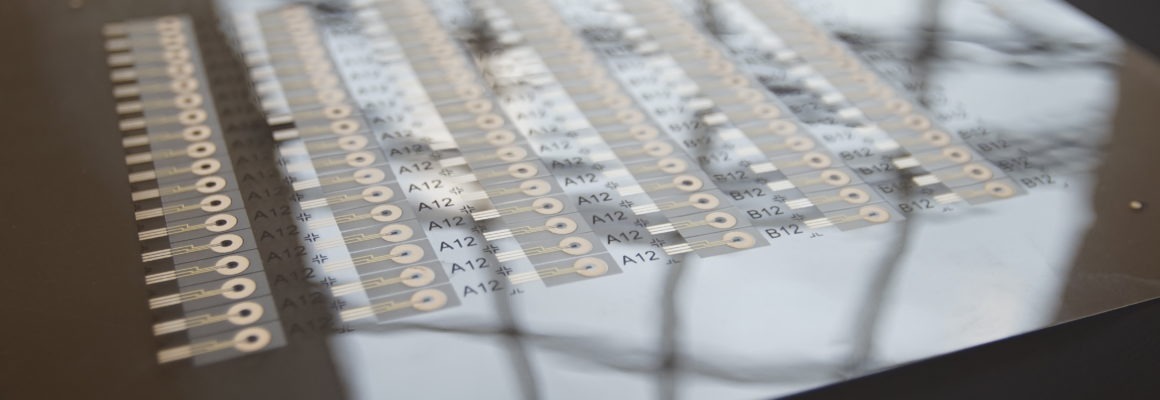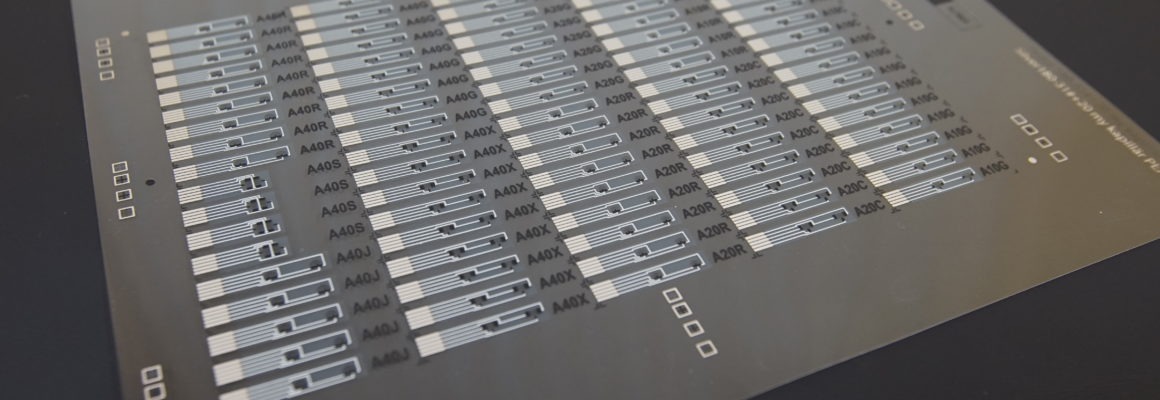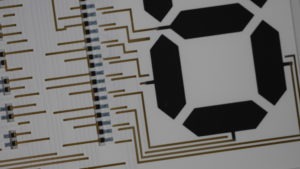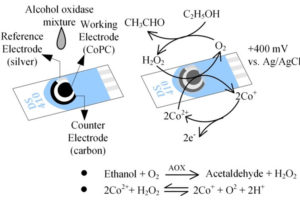Printed Sensors
From biomarker to electric signal
OECTs
Printable organic electrochemical transistors (OECT) can be designed into a bi-stable and dynamic mode of operation. These transistors operate at voltages below 2V. Both ions and electrons are used as the signal carriers. This is of particular interest and importance for chemical sensors. By combining a proton-conducting electrolyte (Nafion®) that changes its conductivity upon exposure to humidity, a simple OECT humidity sensor was achieved. This proves the use of this OECT as the ion-toelectron transducer. Academic paper here.
We envisage OECTs as a key component in bridging the gap between biobased and electric systems, such as in the human body.
Printing of sensors
Screenprinting is a common technique to produce multilayer functional systems. One of the most common on the market today is the printed glucose sensor, where several billion units are produced annually.
Example from the Journal of Biomedical Science and Engineering:
http://file.scirp.org/Html/3-9101790_35434.htm
Vol.6 No.8(2013), Article ID:35434,8 pages DOI:10.4236/jbise.2013.68096
Predictive models of ethanol concentrations in simulated exhaled breath and exhaled breath condensate under varied sampling conditions





